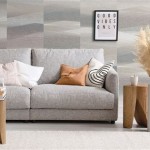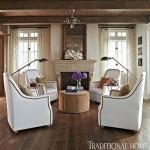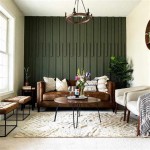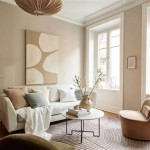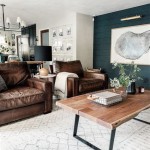Metallic Wall Decor For Living Room: A Comprehensive Guide
Metallic wall decor has emerged as a prominent trend in interior design, particularly within living rooms. Its ability to introduce sophistication, texture, and visual interest makes it a versatile choice for diverse aesthetic preferences. The metallic elements used in these decorations can range from subtle accents to bold statement pieces, complementing various architectural styles and color palettes. Understanding the nuances of metallic wall decor, including material choices, design styles, and placement considerations, is crucial for achieving a harmonious and visually appealing living room environment.
Material Considerations in Metallic Wall Decor
The selection of materials significantly impacts the overall aesthetic and practical aspects of metallic wall decor. Common materials include metals like brass, copper, aluminum, iron, and stainless steel, each offering distinct characteristics in terms of color, texture, and maintenance requirements.
Brass: Brass, an alloy of copper and zinc, presents a warm, golden hue that can enrich a living room with a sense of classic elegance. It naturally develops a patina over time, a process that can either be embraced for a vintage aesthetic or mitigated through regular polishing. Brass is relatively durable but may require more frequent cleaning compared to other metals to maintain its original luster.
Copper: Copper offers a reddish-brown tone that adds a touch of rustic charm and warmth to a space. Similar to brass, copper develops a patina with age, which many find visually appealing. Copper is naturally antimicrobial and boasts excellent conductivity, which is generally irrelevant in wall decor but highlights its overall functionality. Maintaining copper involves occasional polishing to prevent excessive oxidation.
Aluminum: Aluminum is a lightweight and corrosion-resistant metal that is often used in contemporary and minimalist designs. Its inherent silver color is easily adapted through powder coating or anodizing, allowing for a wide range of colored finishes. Aluminum is virtually maintenance-free and suitable for various environments within the living room.
Iron: Iron, particularly wrought iron, is valued for its strength and malleability, enabling intricate designs. It is frequently used in decorative wall panels, sculptures, and frames. Iron typically requires a protective coating to prevent rusting, and its weight necessitates careful consideration of wall mounting techniques.
Stainless Steel: Stainless steel is known for its durability, resistance to corrosion, and sleek, modern appearance. It is often used in minimalist and industrial-style living rooms. Stainless steel is easy to clean and requires minimal maintenance, making it a practical choice for busy households.
Beyond the pure metals, composite materials that incorporate metallic finishes are also prevalent. These can include wood or MDF (Medium-Density Fiberboard) with metallic paint or foil overlays, providing a cost-effective alternative to solid metal pieces while still achieving a similar visual effect. It's important to note the type of coating used, as some coatings may scratch more easily than a solid metal piece.
Design Styles and Applications
Metallic wall decor is available in a wide array of design styles, allowing it to blend seamlessly with diverse living room aesthetics. Some common styles include:
Abstract Art: Abstract metallic wall sculptures or panels offer a contemporary and artistic touch. These pieces often incorporate geometric shapes, flowing lines, or textured surfaces, making them visually engaging focal points within the room. Abstract art complements minimalist, modern, and eclectic styles.
Geometric Patterns: Geometric patterns, such as hexagons, triangles, and intricate tessellations, are frequently rendered in metal to create visually dynamic wall coverings. These patterns work well in modern, Scandinavian, and art deco-inspired living rooms.
Nature-Inspired Designs: Metallic representations of leaves, branches, flowers, or animals can bring a touch of the outdoors inside. These designs are often used in rustic, bohemian, and transitional living rooms. The metallic finish adds a touch of sophistication to the natural motifs.
Industrial Style: Industrial-style metallic wall decor often features exposed metal, distressed finishes, and reclaimed elements. These pieces complement loft-style apartments, urban spaces, and industrial-chic living rooms. Common elements include metal gears, pipes, and vintage signs.
Art Deco: Art Deco designs incorporate stylized geometric shapes, symmetrical patterns, and luxurious materials. Metallic accents, often in gold or brass, are integral to the Art Deco aesthetic. Metallic wall mirrors, geometric panels, and stylized sunbursts are common examples.
Mirrors with Metallic Frames: Mirrors, particularly those with metallic frames, can enhance the sense of space and light within a living room. The metallic frame adds a touch of elegance and reflects the surrounding decor, creating a cohesive look. Frame styles range from ornate and traditional to sleek and modern.
Metallic wall decor can be integrated into the living room in various ways. Large-scale metal panels can serve as statement pieces, covering an entire wall or acting as a headboard replacement behind a sofa. Smaller metal sculptures or framed artwork can be arranged in groupings to create visual interest. Metallic accents can also be incorporated into existing decor, such as picture frames, candle holders, or shelving units, to tie the metallic theme together.
Placement and Integration Strategies
The placement of metallic wall decor significantly impacts its visual impact and overall contribution to the living room's ambiance. Careful consideration should be given to the size, scale, and positioning of the metallic elements to achieve a harmonious and balanced space.
Focal Point Consideration: Position the most striking metallic pieces on a prominent wall where they can serve as a focal point. This could be above the fireplace, behind the sofa, or on a large, empty wall. Ensure that the surrounding decor complements the metallic piece without overwhelming it.
Scale and Proportion: The size of the metallic wall decor should be proportionate to the size of the wall and the surrounding furniture. A large wall can accommodate a larger piece or a grouping of smaller items, while a smaller wall may benefit from a single, well-chosen accent. Avoid overwhelming the space with too much metal, which can create a cluttered or heavy feeling.
Lighting Considerations: Lighting plays a crucial role in enhancing the reflective properties of metallic surfaces. Direct lighting can highlight the texture and details of the metal, while indirect lighting can create a softer, more ambient glow. Experiment with different lighting options to determine the most flattering effect. Consider installing spotlights or accent lighting specifically to showcase the metallic wall decor.
Color Palette Coordination: Metallic wall decor should complement the existing color palette of the living room. Gold and brass tones pair well with warm colors, such as reds, oranges, and yellows, while silver and stainless steel tones complement cool colors, such as blues, greens, and purples. Consider using metallic accents to tie together disparate color elements within the room.
Balance and Symmetry: Achieve visual balance by strategically placing metallic elements throughout the room. This doesn’t necessarily require perfect symmetry, but rather a sense of equilibrium. For example, a large metallic sculpture on one wall can be balanced by a grouping of metallic picture frames on another. Avoid concentrating all metallic elements in one area of the room, which can create an unbalanced effect.
Texture and Material Mixing: Integrate metallic wall decor with other textures and materials to create visual interest. Combine metal with natural materials such as wood, stone, or fabric to add depth and dimension to the space. The contrast between the hard, reflective surface of metal and the softer, more tactile qualities of other materials can create a visually appealing and inviting atmosphere.
Negative Space: Utilize negative space effectively to prevent the metallic wall decor from feeling overwhelming. Allow ample space around the piece to create a sense of breathing room and to highlight its individual characteristics. Avoid overcrowding the wall with too many decorative elements.
Wall Color Considerations: The color of the wall behind metallic decor plays a significant role in its appearance. Darker wall colors can create a dramatic contrast, making metallic elements stand out. Lighter wall colors can create a softer, more subtle effect. Choose a wall color that complements the metallic finish and enhances the overall aesthetic of the living room.
By carefully considering the material, design, and placement of metallic wall decor, individuals can transform their living rooms into sophisticated and visually engaging spaces. The versatility of metallic elements allows for endless creative possibilities, catering to a wide range of personal styles and preferences. The key is to approach the design process with a thoughtful and well-considered plan, ensuring that the metallic accents seamlessly integrate into the existing decor and enhance the overall ambiance of the room.

Stylish Metal Wall Art Designs For Your Home In 2024 Decor Living Room Gold Peacock

Floral Wall Decor Metal Art For Living Room 52 X 28 Inches Hansart

Stratton Home Decor Flowing Leaves Metal Wall Living Room

Metal Wall Decor Buy Art For Living Room Online In

Multicolored Plates Metal Wall Art For Living Room Decor

Golden Flower Metal Wall Art Perfect For Living Room

3d Nordic Style Abstract Wall Decoration Art Love Metal Decor Living Room

Home Metal Wall Decor For Living Room Art Decoration 3d Theme Sculpture

Buy Dsh Metal Wall Art Sculpture Hanging Showpiece Perfect For Home Hotel Restaurant Living Room Decoration 01 Green Online At Best Prices In Jiomart

51 2 Modern Luxury Lotus Frame Metal Hanging Wall Decor Home Art For Living Room Homary

